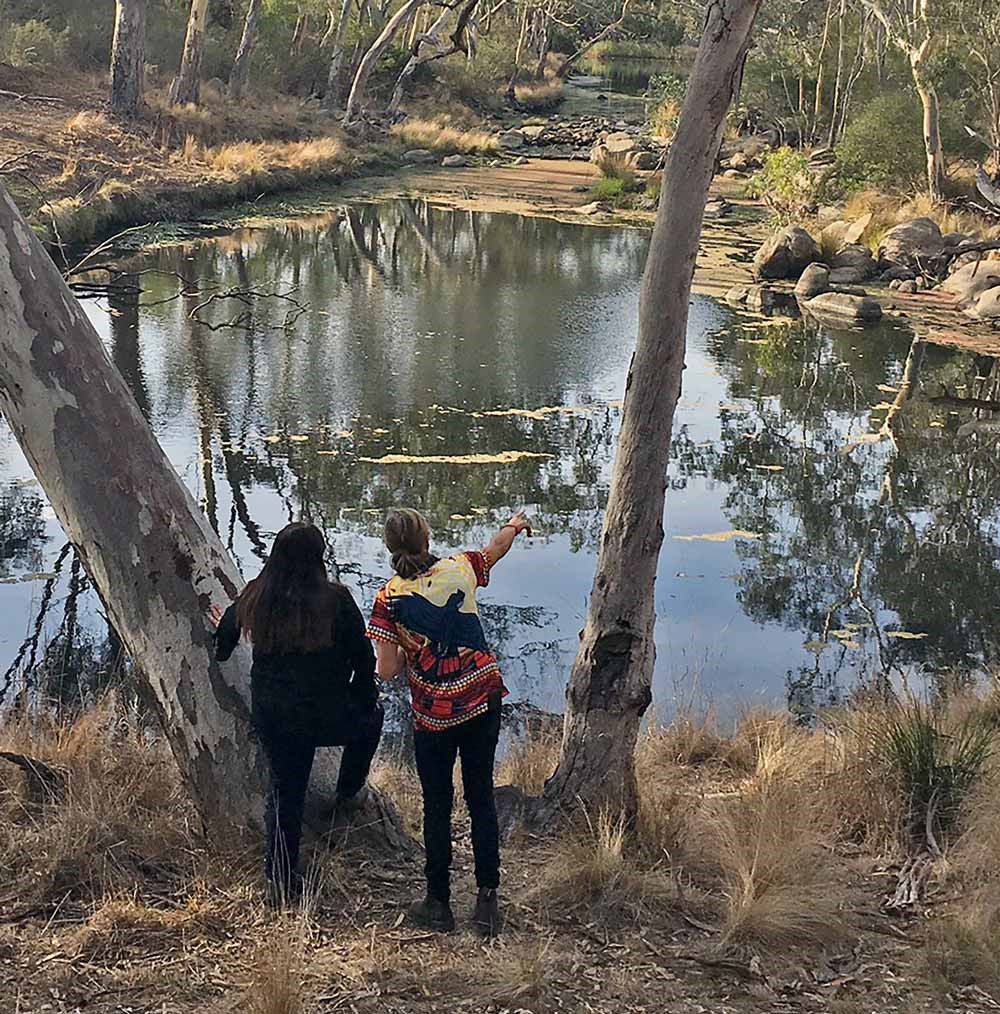The Moorabool River is known to the Wadawurrung people as ‘Moorabull yulluk.’ All Wadawurrung main rivers have traditional language names.
Celebrating culture and water, Wadawurrung Traditional Owners, community members, Corangamite CMA and water industry partners from agencies such as the Department of Environment, Land, Water and Planning, Central Highlands Water, Barwon Water and the VEWH met at Dog Rocks on the Moorabull yulluk to welcome the release of 500 megalitres of water for the environment.
Wadawurrung woman Melinda Kennedy said that Wadawurrung people have a strong connection to the Moorabull yulluk and traditionally caught eels as a food source.
“One of the species this water will benefit is the short-finned eel and we will celebrate this by showcasing a hand-woven ‘Buniya Binak’ (eel trap) that has been created by Wadawurrung’s Tammy Gilson.”
“Securing the water is vital for maintaining flows, filling refuge pools and linking habitats to support species survival. It also ensures locations along the Moorabool that are culturally significant for meeting, ceremony and trade are preserved,” Melinda said.
Wadawurrung held a special Welcome and Water Ceremony – ‘Yaluk Wiyn Burt.’ As part of the Ceremony, Wadawurrung presented a beautifully designed possum skin, coolamon and baby Buniya Binak to Corangamite CMA Aboriginal Water Officer Kristen Lees. And, the Buniya Binak was placed between rocks in the river under a cultural fishing permit in the hopes of catching an eel!
“The Buniya Binak was woven from reeds collected along the river. Traditionally it was the Wadawurrung women who wove the traps and caught the eels. This is a great celebration of Wadawurrung women,” Melinda said.
“The design on the possum skin celebrates the projects and symbolises the mountains and confluences of the Moorabull and Barwon – and all the meeting places along the river banks.”
Wadawurrung and Corangamite CMA have developed a strong partnership. Through working together, they have been able to ensure that Wadawurrung Traditional Owners have a central voice in waterway management on their Country.
Recognising culturally significant places and species, and celebrating traditional practices, like the Buniya Binak, helps share knowledge, restore connections and highlight Wadawurrung culture along the river.

Wadawurrung women Melinda Kennedy (left) and Tammy Gilson (right), by Kristen Lees, Corangamite CMA